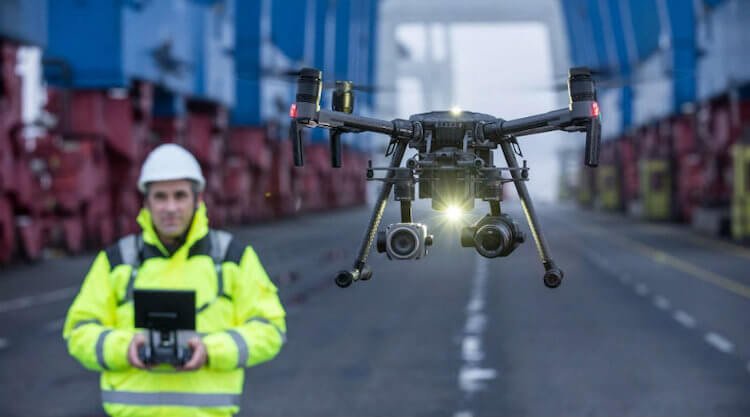New technologies often tend to expand beyond their original scope. Often, companies that have computational tools for one industry go to another. It happened this time too, when Qualcomm, known for its processors, which are the lion's share of smartphones on the market, decided to try themselves in the development of robotics. She has not yet begun to build her humanoid robots, but she has already noted the production of chips that will be built into such robots and perform very important tasks. Is the company really that ready to move into a new business for itself?

Qualcomm is one of those companies that are rushing into the field of robotics.
Apart from processors, Qualcomm also manufactures 5G modems that are used in smartphones. Some chipsets are already built into them, for example, Snapdragon 76 5G. In Snapdragon 865, it must be installed separately, but it comes bundled with a processor chip. Now with the new RB5 system, Qualcomm has begun mastering robots and drones.
This week the San Diego-based mobile chipmaker unveiled the first system 5G with hardware and tools for advanced robots. The Qualcomm Robotics RB5 platform uses the company's new QRB5165 processor for robots and has a companion module for 4G LTE and 5G connectivity via the Qualcomm X55 modem, which is also used in smartphones today.
RB5 includes artificial intelligence. This allows developers to build smart, fast, and responsive machines. The best part is that it also has a very low power consumption, which is important in the case of using autonomous robots, where battery power is simply critical.
Qualcomm expects new RB5-based machines to hit the service and manufacturing industries. At least 20 companies have already studied the technology and are likely to use it. There are even LG among them, Skydio drone maker, security robot maker NXT Robotics, and other companies that make robots. Including sports.

Such robots can also be equipped with support for fifth generation networks.
And more than 30 hardware and software companies are working on related technology that enables a variety of robotics applications. These include drone mapper AirMap, publisher Ubuntu Canonical, fleet manager InOrbit, Panasonic, and Intel RealSense's depth and tracking camera division.
For any type of robot, be it a $ 200 robot or a $ 2 million industrial robot, it has to feel, think, act and communicate, ”said Dev Singh, director of business development and robotics at Qualcomm.“ The Qualcomm processor brings it all together.
While most people think of 5G as smartphone technology, it has the potential to transform other areas of our lives. Fifth-generation networks are essential for robots, automobiles, healthcare systems, retail, and just about every industry you can think of. 5G can link street infrastructure systems and other devices that were not previously connected to the Internet. The devices will literally talk to each other.
Robotics and drones are a great opportunity for Qualcomm to gain a foothold in this business for a long time. She already feels confident enough in this area, but if she succeeds in conquering robotics as well, then everything will be gorgeous for her.

An interesting future awaits us.
What are the advantages 5G
When it comes to robotics and drones, the key benefits 5G are the speed and reliability of wireless technology. Signal latency and response are measured in milliseconds, compared to tens of milliseconds or more with 4G and Wi-Fi. Networks 5G were originally designed with increased stability in mind. This will be especially important in cases where robots connected to such a network will work in production or drive an unmanned vehicle.
Food delivery, autonomous transport, automation of urban space, robot sellers, cleaning systems – all this and much more will definitely be in our future, and, apparently, Qualcomm wants to stake out a place in it right now.
Even before the first sample of such a chip hit the market, companies were already using Qualcomm technology in their devices. But by adapting the processor specifically for robots and drones, Qualcomm has been better able to meet the specific needs of those who use them.

Industrial drones probably need a good connection more than others.
The RB5 is capable of performing artificial intelligence operations at up to 15 trillion operations per second for complex tasks and deep learning. The QRB5165 system processor includes machine learning and a dedicated computer vision engine for video analytics. The Spectra 480 image processor can support seven cameras simultaneously and process images at 2 gigapixels per second.
More than 100 robotics companies have partnered with Qualcomm, Singh said. Such cooperation simply cannot fail to give a competitive advantage in this market. Moreover, the main competitor is going through hard times now. Coincidence? If anything, I'm talking about Huawei.
It only remains to add that RB5 will be available in the very near future. Dev Singh sets aside about six or eight months for this.
